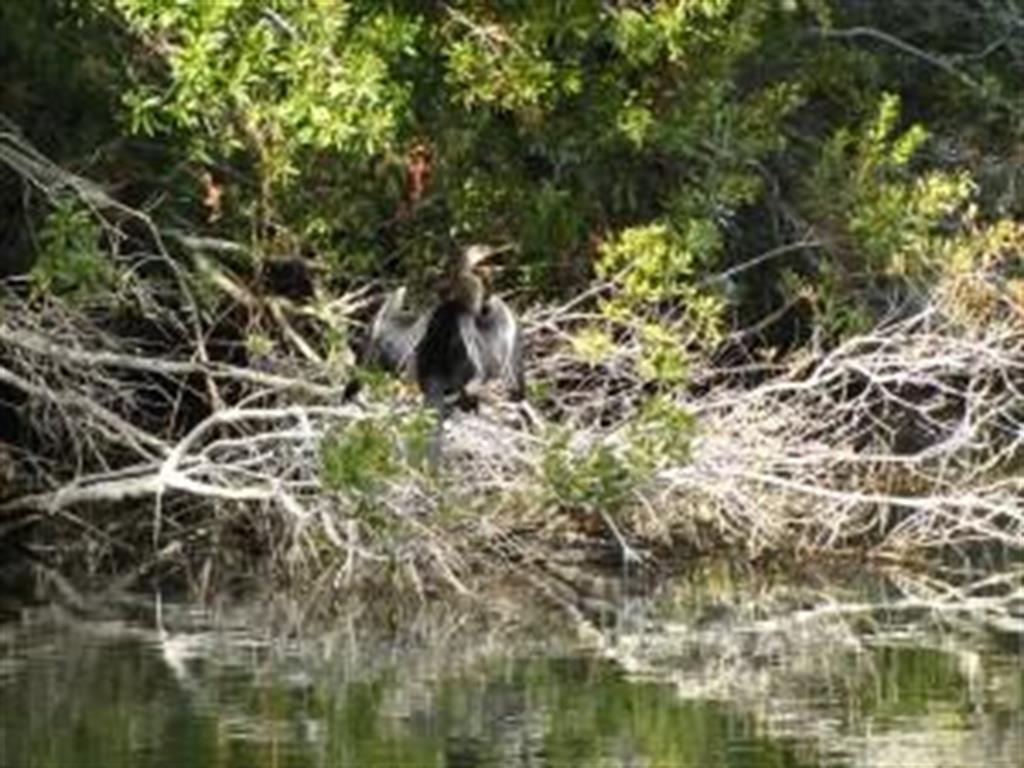This Adventure Was “For The Birds”

During my many adventures on Bald Head Island last year I noticed something – birds. Lots of them. From my first adventure going bird watching with the Bald Head Island Conservancy to watching three osprey circle overhead during a summer-ending kayak trip, birds were everywhere. Over time, I learned that Bald Head Island is a pretty important place for a lot of birds. It serves as a seasonal breeding ground, a year-round home and a migratory stopover, and the types and numbers of birds change with every season. Wanting to learn more about the birds that frequent the island, I contacted the National Audubon Society, a group best known for their work in bird and bird habitat conservation, about the 110th Annual Christmas Bird Count. I made arrangements to join a group of experienced birders and help out.
The Christmas Bird Count started in 1900, when ornithologist Frank Chapman, an officer in the fledgling Audubon Society, proposed a new holiday tradition to replace what was known in many areas as the Christmas Side Hunt. During the Side Hunt, people would choose sides, head into the fields and woods with their guns, and return at a designated time. Whichever group brought back the biggest pile of furred and feathered trophies was declared the winner. Chapman, a forerunner of the conservation movement, proposed a new tradition – counting birds rather than killing them.
I joined Alan Reyner, Ed Toone and Jane Oliver, under the guidance of Bruce Smithson, as the Bald Head Island counters. We met in the harbor early in the morning and headed out to the Point to count shorebirds. When we arrived we found two things – birds and fog. Unfortunately, fog is not conducive to bird counting, but we stayed there, huddled behind the Christmas-New Year’s Tree, watching, counting and hoping the fog would burn off.
Soon we left the Point for Middle Island, where Ibis Roost Pond and the expanse of marsh and creeks promised better birding.
At Ibis Roost Pond we found a few ibis in the trees and several other birds – including yellow-rumped warblers (which everyone called “butter butts”), cardinals, robins and woodpeckers – in the surrounding trees. On the marsh we watched brown pelicans, clapper rails and a pair of northern harriers.
We traipsed all over the island for the next six hours, nearly draining our golf cart batteries dry. We paid visits to several birdfeeders, every bush, vine and tree that had berries on it, and even the Bald Head Island Club’s golf course ponds to find birds.
Our last stop was at the Bald Head Island Conservancy’s pond on Stede Bonnet Wynd. There we saw several herons in the brush across the pond and a rare sight, the anhinga on a tree close to our viewing platform. The anhinga, also known as the snakebird due to its long neck, sunned itself on a tree a few feet away. We watched it for a while, until it jumped from its perch, swam to shore and walked away.
After a long (and chilly) day of bird counting, we tallied our numbers: 59. Just then we heard a cry and turned to see a juvenile hawk in a tree across the way. 60. We saw 60 species of birds numbering upwards of 825 in only a few hours. Bird count groups across the area, from Fort Fisher to Southport to Oak Island, saw 170 bird species and more than 90,000 birds in one day.
To find out more about the National Audubon Society, including information on the Christmas Bird Count and other activities in your area, visit http://www.audubon.org.
Published on Saturday, January 1, 2011